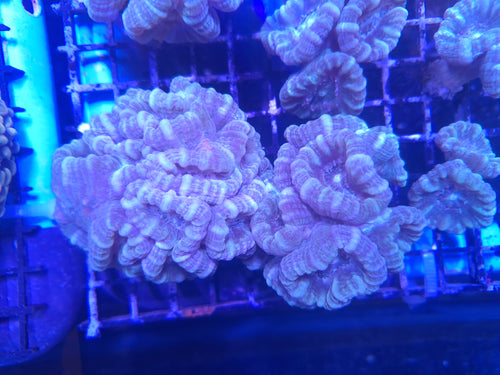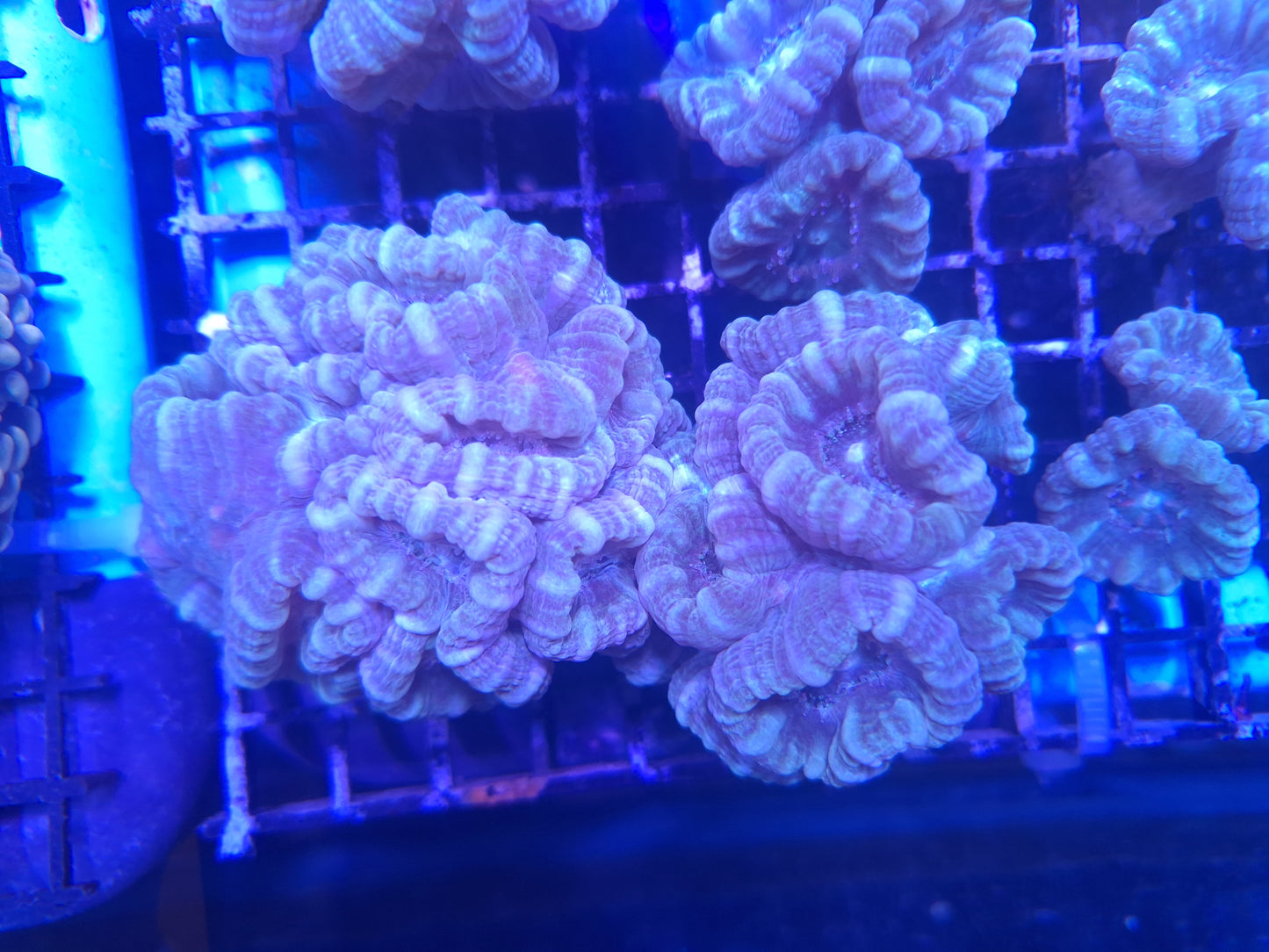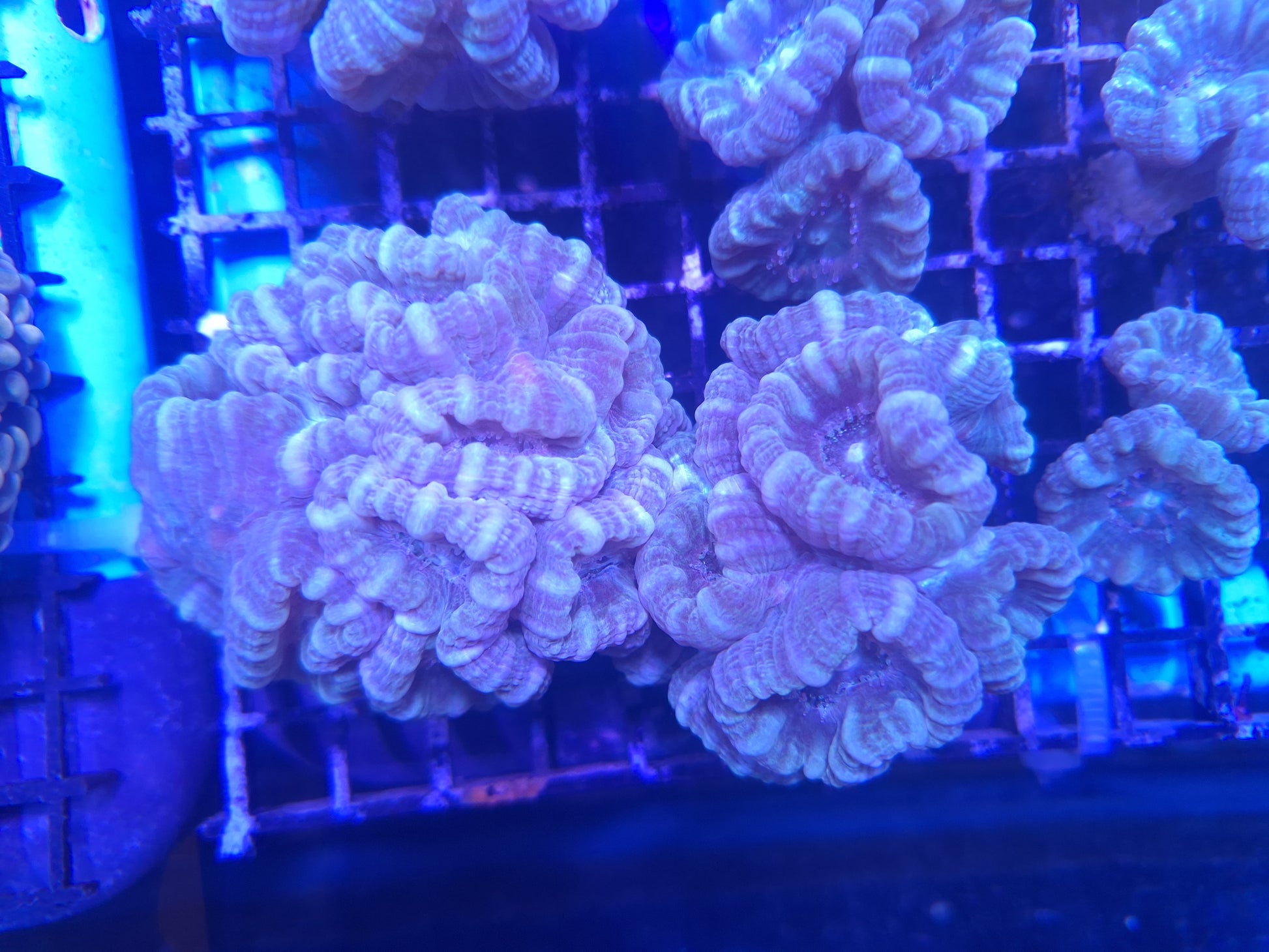Candy cane Blue
Candy cane Blue
check_circle Fast Shipping
check_circle Quality Products
check_circle Affordable Price
Reach out to us on ''available to order'' items via WhatsApp or email
Low stock: 1 left
Couldn't load pickup availability

Candy cane Blue
package_2
Product Description
Product Description
Blue Candy Cane Coral (Caulastrea furcata) – Description & Care
The Blue Candy Cane Coral, a variety of Caulastrea furcata, is an LPS coral known for its blue or bluish-gray polyps with neon or pastel accents. It forms rounded, fleshy polyps atop a branching skeletal base, resembling candy canes, which is how it gets its name. This coral is prized for its hardiness, ease of care, and striking coloration, making it a great choice for beginner and advanced reef keepers alike.
Care Requirements:
1. Lighting
- Low to Moderate (PAR 50-150)
- Can thrive under LED, T5, or metal halide lighting, but does best under moderate blue spectrum lighting, which enhances its blue hues.
- Too much light can cause bleaching, while too little can slow growth.
2. Flow
- Moderate, Indirect Flow
- Prefers gentle to moderate flow to keep detritus from settling while preventing excessive movement of its fleshy polyps.
- Too much flow can cause the coral to retract or stress its delicate polyps.
3. Placement
- Lower to mid-tank, depending on light intensity.
- Place in sandbeds, on rock ledges, or in stable crevices where it won’t be knocked over.
- Needs 2-4 inches of space from aggressive corals but is relatively peaceful toward most other LPS.
4. Water Parameters
- Temperature: 76-80°F (24-27°C)
- Salinity: 1.025 SG (35 ppt)
- pH: 8.1-8.4
- Alkalinity: 8-12 dKH
- Calcium: 400-450 ppm
- Magnesium: 1250-1350 ppm
- Nitrates: 5-10 ppm
- Phosphates: 0.01-0.05 ppm
5. Feeding
- Photosynthetic but benefits from supplemental feeding.
- Target feed 1-2 times per week with small meaty foods like mysis shrimp, brine shrimp, or coral foods (e.g., Reef Roids, Benereef).
- Feeding encourages faster growth and larger polyp extension.
6. Tank Mates & Compatibility
- Peaceful coral, making it ideal for mixed reef tanks.
- Can be placed near other LPS corals with similar aggression levels (e.g., acans, blastos, or other candy canes).
- Safe with most reef-safe fish and invertebrates, but avoid coral-picking fish like butterflyfish and large angelfish.
7. Special Considerations
- Easily propagated through fragging, making it a great choice for coral growers.
- Monitor for tissue recession, which may indicate poor water quality or inadequate feeding.
- Grows best with stable parameters and occasional target feeding.


